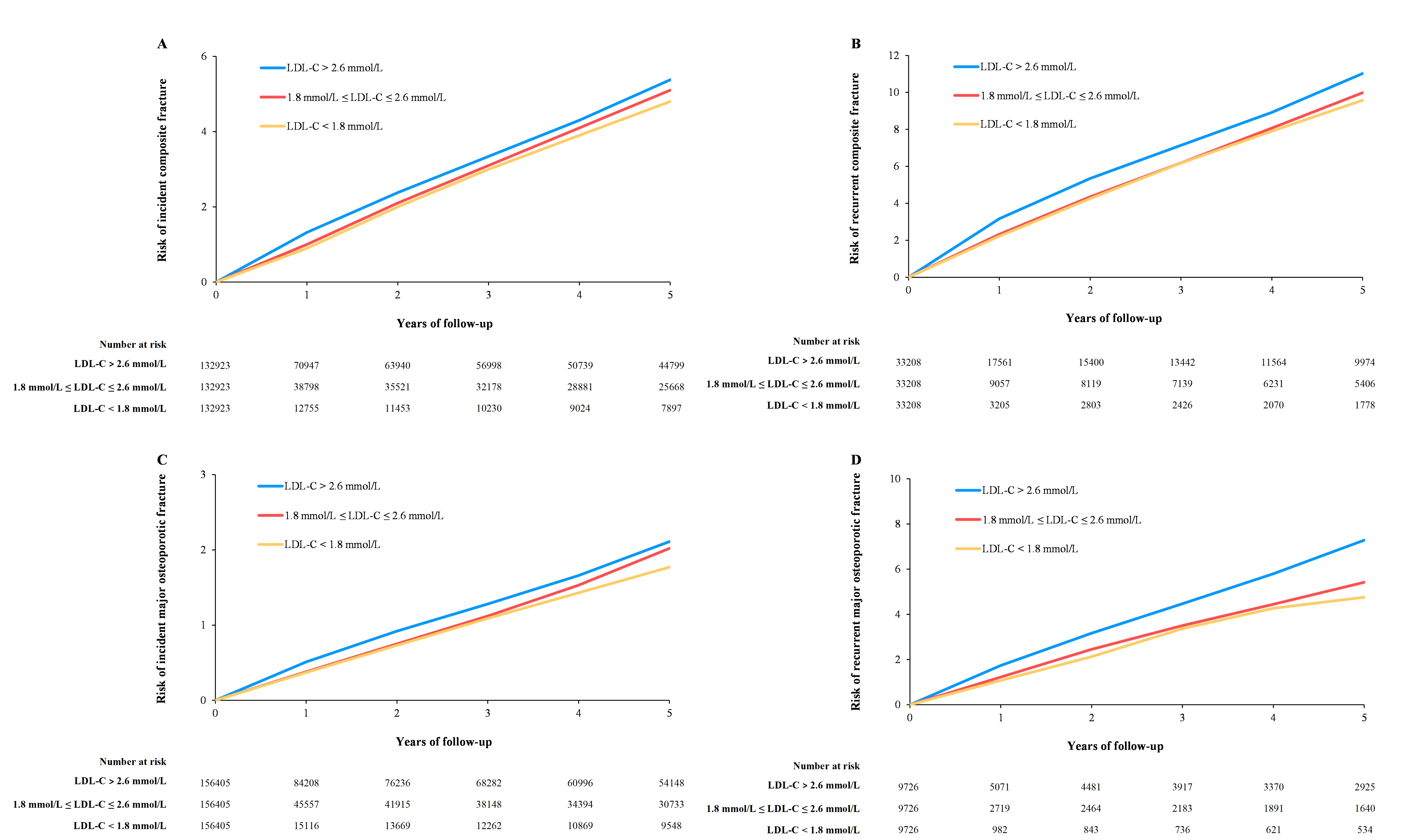Session Information
Date: Monday, November 18, 2024
Title: Osteoporosis & Metabolic Bone Disease – Basic & Clinical Science Poster
Session Type: Poster Session C
Session Time: 10:30AM-12:30PM
Background/Purpose: High low-density lipoprotein cholesterol (LDL-C) is a major risk factor for fracture; however, whether LDL-C lowering induced by statins is associated with decreased fracture risk remains controversial, frequently influenced by indication bias. We emulated a randomized target trial to evaluate the relation between LDL-C lowering and fracture risk, particularly concerning the extent of LDL-C lowering, among patients with hyperlipidaemia.
Methods: Individuals aged 40 to 90 years old who initiated statin therapy for hyperlipidaemia were included from the IQVIA Medical Research Data primary care database in the United Kingdom, 2000-2022. We emulated analyses of a hypothetical target trial using a “cloning, censoring, and weighting” approach to assess the effects of achieving the target level of 2.6 mmol/L (1.8 mmol/L≤ LDL-C ≤2.5 mmol/L) or lower target level of 1.8 mmol/L (LDL-C < 1.8 mmol/L) within 1 year after statin initiation on the primary outcome (i.e., incident and recurrent hip fracture) and secondary outcomes (i.e., incident and recurrent composite fracture and major osteoporotic fracture) over 5-year follow-up, respectively (Figure 1).
Results: Among 165,242 people with hyperlipidaemia (mean age 62.6 years, women 51.1%), the 5-year risk of incident hip fracture was lower in the “1.8-2.6 mmol/L” arm (0.53%) and in the “< 1.8 mmol/L” arm (0.52%) than the “ >2.6 mmol/L LDL-C” arm (0.65%) The corresponding hazard ratios (HRs) were 0.77 (95% confidence interval [CI]: 0.65-0.91) and 0.68 (95% CI: 0.54-0.86), respectively (Figure 2). A similar decreased risk of recurrent hip fracture was observed for the “1.8-2.6 mmol/L” arm (HR=0.79, 95% CI: 0.39-1.58) and “< 1.8 mmol/L” arm (HR=0.32, 95% CI: 0.15-0.66) compared with the “ >2.6 mmol/L” arm, respectively. Additionally, lowering LDL-C levels reduced the risks of composite fracture and major osteoporotic fracture. (Figure 3).
Conclusion: In this population-based study, the extent of LDL-C lowering was associated with a decreased risk of fracture in individuals with hyperlipidaemia, suggesting that the therapeutic paradigm of “lower is better” could be advantageous for fracture prevention in individuals with hyperlipidaemia. Additional studies, including RCTs, will be needed to corroborate our findings and explore the therapeutic potential of statins for decreasing fracture risk among patients with hyperlipidaemia.
To cite this abstract in AMA style:
Wen Z, Wang Y, Li X, Zhang Y, Xie J, Lyu H, Li C, Wei J, Lei G, Zeng C. Unveiling the Association Between Low-Density Lipoprotein Cholesterol Lowering and Fracture Risk Among Patients with Hyperlipidaemia in a Population-Based Cohort Study: The Lower, the Better [abstract]. Arthritis Rheumatol. 2024; 76 (suppl 9). https://acrabstracts.org/abstract/unveiling-the-association-between-low-density-lipoprotein-cholesterol-lowering-and-fracture-risk-among-patients-with-hyperlipidaemia-in-a-population-based-cohort-study-the-lower-the-better/. Accessed .« Back to ACR Convergence 2024
ACR Meeting Abstracts - https://acrabstracts.org/abstract/unveiling-the-association-between-low-density-lipoprotein-cholesterol-lowering-and-fracture-risk-among-patients-with-hyperlipidaemia-in-a-population-based-cohort-study-the-lower-the-better/



